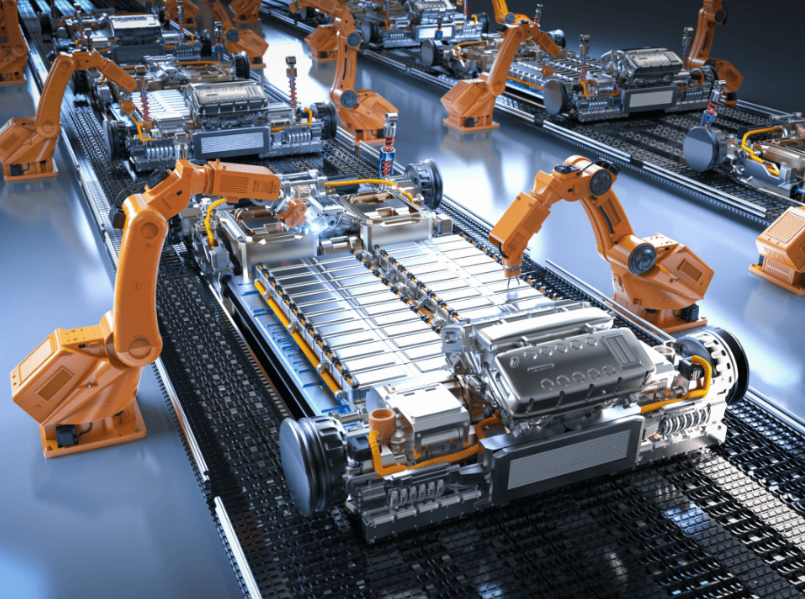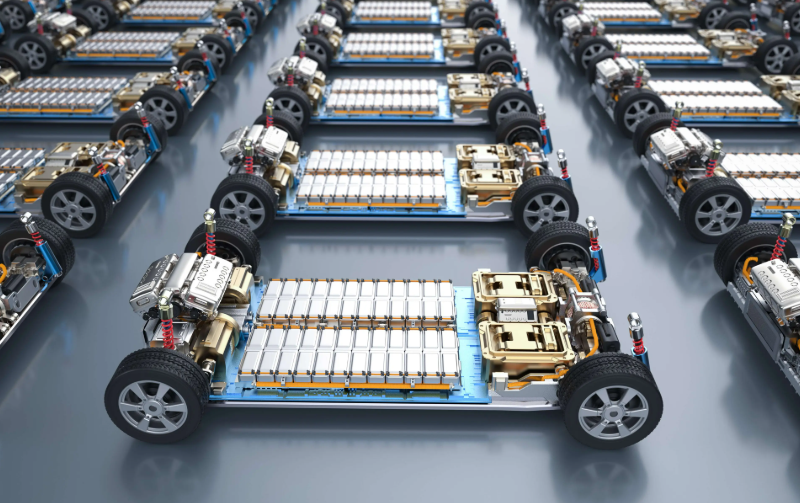The global transition toward renewable energy systems has driven significant advancements in automation technologies for solar, wind, battery, and hydrogen production. These automated solutions address critical challenges in scalability, precision, and cost-efficiency across the new energy value chain.
 Solar Manufacturing Automation
Solar Manufacturing Automation
1. Photovoltaic Cell Production
- Laser scribing systems achieve 20μm patterning accuracy at 1,200 wafers/hour
- Plasma-enhanced chemical vapor deposition (PECVD) tools maintain ±1% film thickness uniformity
- Automated visual inspection detects 0.1mm microcracks with 99.8% reliability
2. Module Assembly Lines
- Robotic stringers place 12 busbars/minute with 0.2mm positional tolerance
- Laminators operate at 150°C with <0.5% void area in final products
- IV testers characterize modules at 1,200V/15A capacity
3. Balance of System Components
- Automated combiner box assembly handles 40 inputs/minute
- Solar tracker actuators position within ±0.5° under 50Nm loads
- Inverter production lines test at 98.5% conversion efficiency
Wind Power Automation
1. Blade Manufacturing
- CNC trimming systems process 80m blades with 2mm contour accuracy
- Automated fiber placement lays 20kg/hour composite materials
- Ultrasonic testing examines internal structures at 5MHz frequency
2. Nacelle Assembly
- Torque-controlled bolting systems achieve 50,000Nm preload
- Gearbox alignment maintains <50μm parallel offset
- Generator winding machines place 0.5mm² copper wire at 10m/s
3. Tower Production
- Robotic welding systems complete 40m seams in single passes
- Flange machining holds 0.02mm flatness tolerance
- Automated coating applies 300μm thickness ±15μm
Battery Manufacturing Automation
1. Electrode Production
- Slot-die coaters deposit active materials at 50m/min with ±1μm thickness
- Calendering machines compress to 80μm with <1% thickness variation
- Laser notching achieves 100μm cut width at 200PPM
2. Cell Assembly
- Z-fold separators position within 0.1mm tolerance
- Automated electrolyte filling achieves 1% volume accuracy
- Formation systems cycle 500A charge/discharge currents
3. Pack Integration
- Robotic busbar welding conducts 200 spots/minute
- Thermal interface material application at 0.5mm ±0.05mm
- End-of-line testers simulate 10-year aging in 8 hours
Hydrogen System Automation
1. Electrolyzer Manufacturing
- Bipolar plate stamping maintains 10μm flatness
- Membrane electrode assembly (MEA) automation achieves 99.9% active area coverage
- Stack compression systems apply 5MPa uniform pressure
2. Fuel Cell Production
- Automated gasket placement with 0.05mm positional accuracy
- Flow field machining holds 20μm channel depth consistency
- 200kW test stations validate stack performance
3. Hydrogen Infrastructure
- Automated composite vessel winding at 50m/min fiber placement
- Dispenser nozzle machining to 0.8μm surface finish
- Cryogenic valve assembly with helium leak testing
Cross-Cutting Automation Technologies
1. Material Handling Systems
- AMRs transport 1,500kg battery modules at 2m/s
- Vacuum end effectors handle 2m² solar glass with <0.1g/cm² pressure
- Cryogenic robotic arms operate at -253°C
2. Quality Control Systems
- X-ray tomography detects 10μm defects in battery cells
- Infrared thermography monitors 0.1°C thermal variations
- Mass spectrometers analyze gas purity to 1ppm resolution
3. Digital Integration
- Digital twins simulate 20-year degradation profiles
- MES systems track 500+ parameters per manufacturing step
- Edge computing analyzes 10TB/day production data
Technical Specifications by Application
Solar Manufacturing
- Cell efficiency testing: 25.5% for PERC, 28% for HJT
- Module power tolerance: 0/+5W standard
- Durability testing: 1,000 thermal cycles, 2,000 humidity freeze cycles
Battery Production
- Electrode density: 3.4-3.8g/cm³ for NMC811
- Formation loss: 5-8% of initial capacity
- Self-discharge testing: <3%/month at 25°C
Wind Component Standards
- Blade surface roughness: Ra ≤6.3μm
- Gearbox noise: ≤85dB at 1,500rpm
- Tower verticality: ≤1/1,000 height ratio
Emerging Technical Developments
- AI-driven process optimization reducing silver paste consumption by 15%
- Quantum sensing for real-time electrolyte distribution monitoring
- Self-healing automation systems predicting 95% of maintenance needs
- Additive manufacturing of bipolar plates with 50μm feature resolution
The implementation of these automation technologies continues to reduce levelized energy costs while improving product reliability and manufacturing throughput. Current research focuses on self-configuring production lines and closed-loop material recovery systems, addressing both economic and sustainability requirements in the new energy sector. Technical challenges remain in scaling terawatt-level production capacities while maintaining sub-micron process tolerances across multi-stage manufacturing processes.








